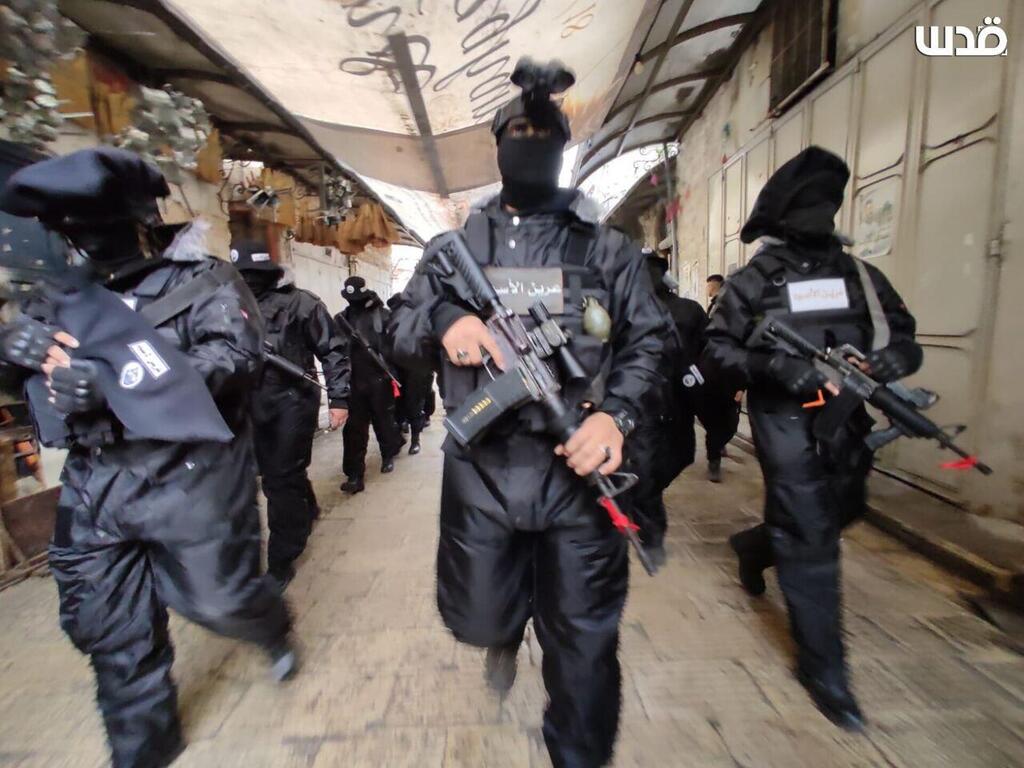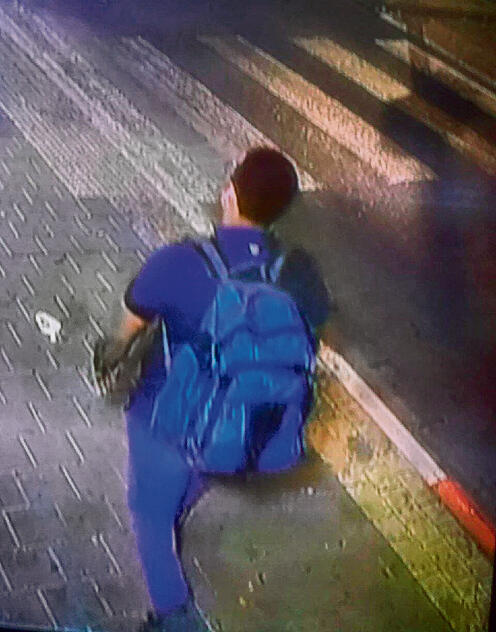Recently, the National Intelligence Directorate alerted the defense establishment about a potential escalation in the West Bank, possibly reaching the scale of an intifada, with bombings and suicide attacks within Israel. The attack near a synagogue in Tel Aviv on Sunday might be yet another sign that the warning of an imminent armed escalation in the West Bank should be taken seriously.
The explosion in southern Tel Aviv
In 2022-2023, there were bomb attacks by Palestinians within Israel, but the device used on Sunday had all the hallmarks of the terrorist initiatives in the West Bank for which the warning was issued. The explosive was a powerful homemade bomb, believed to be similar to those used by suicide bombers during the second intifada. The attacker came from the northern West Bank, a focal point of armed escalation.
Unlike previous intifadas, which were spontaneous popular eruptions triggered by specific events that drove Palestinians into the streets, the current escalation is developing gradually, with new elements being added over time. In fact, the escalation started even before October 7, prompting the IDF to redeploy combat units from the Gaza front to reinforce the West Bank.
What has changed since the outbreak of the war is the intense use of explosives and increased motivation among young people in refugee camps, likely due to the war in the Gaza Strip. The use of ground charges and roadside bombs began before October 7, but their quantity and quality have significantly increased during the war. The rising motivation stems from the fact that almost every Palestinian family in the West Bank has relatives in Gaza. This is a motivational factor that cannot be ignored when considering the continuation of the war and the distribution of Israeli forces across different fronts.
Additionally, Jewish terrorism not only agitates the area but also accelerates the organization of armed Palestinian groups and directly harms the State of Israel due to the international backlash against the actions of the rioters. The day may not be far off when even the U.S. might impose sanctions on Israel as a whole because of them.
The availability of light weapons, which existed even before the war, continues and contributes to the emergence of battalions that have formed in the northern West Bank and its western part, and recently also in the Jordan Valley. These battalions consist of young Palestinians who have obtained available weapons and, since they are unemployed and cannot work in Israel, they need the money Hamas and Islamic Jihad pay to anyone willing to act on their behalf.
This creates a vicious circle: Israel does not allow Palestinians to work within its borders, leading to economic hardship and unemployment, driving many young people to seek solutions to their emotional and economic distress with Hamas and Islamic Jihad. The more IDF raids occur in the West Bank, the more young Palestinians will turn to terrorism due to anger, resentment and the need to feed their families.
Before October 7, such battalions were primarily in the Jenin refugee camp, and then in the Nur al-Shams camp near Tulkarm. However, now there are about 15 armed groups scattered throughout the West Bank, and the phenomenon is spreading to the Jordan Valley and the Binyamin area.
On the other hand, Israel is also in a bind. If the IDF does not enter the refugee camps and eliminate terrorist cells belonging to these battalions from the air, the phenomenon will spill over into Israel. The concrete fear in the defense establishment is of a full-fledged intifada, where the abundance of weapons will mean that, in lieu of stone-throwing and tire burning, there will be many more exchanges of live fire.
It is important to note that the availability of weapons is much greater, as Iran has doubled its efforts to smuggle weapons from Jordan and Syria to Palestinians in the West Bank, and the border with Jordan no longer poses an obstacle to smugglers.
The scenario that keeps the defense establishment awake at night is an organized assault by Palestinian battalions in the northern West Bank on Jewish settlements or isolated farms that lack fences, similar to what Hamas did on October 7, with the involvement of Palestinian security forces. In IDF, this is called the "Cane Reversal Scenario," because until now, the PA security mechanisms have been trying to curb the phenomenon of armed battalions. They understand that if the situation gets out of control in the West Bank, the Palestinian Authority will be next in line and will face a relentless attack. However, the capabilities of the security personnel are limited and, despite their best efforts, they are unable to deal with the phenomenon.
The IDF is working to suppress the wave of terrorism. Until October 7, the Israeli military limited the scope and frequency of operations in the refugee camps due to concerns about rocket and missile responses from Gaza. Now, the IDF operates without restrictions and attempts to stay one step ahead of the terrorists.
There is a kind of interplay here. Terrorists learn to use explosives generously because they see they cause casualties among IDF soldiers in Gaza, and IDF realizes that the combined use of maneuvering ground forces alongside armed drones, or even fighter jets, yields good results and saves casualties for our forces.
But the situation is one of medium-intensity fighting spreading from the northern West Bank. Today, there are more than 23 battalions and special units of the IDF in the West Bank, and if there begins to be activity involving sending suicide bombers with explosive devices or explosive belts to Israel, this force will grow even larger. The Shin Bet will also have to cut back on forces it deploys in the Gaza Strip and invest them in the West Bank.
Preparing for a multi-front confrontation
According to all indications, we might soon find ourselves on another full combat front. The conclusion is that, alongside aggressive action, the seam line must be blocked much more hermetically than it is currently. Citizens must remain vigilant, and police officers and soldiers must patrol crowded places to create deterrence.
Another conclusion is that the IDF must consider the possibility that it will have to fight intensely against Lebanon or Iran while simultaneously maintaining medium-intensity combat in Gaza and the West Bank. This requires particularly creative personnel policies and doubling counterintelligence efforts. On Monday night, the IDF announced that 15,000 citizens up to age 35 who were exempted will be called back to reserves.
Gaza-style combat in the West Bank could undermine our international legitimacy to defend ourselves. On the other hand, if there is a cease-fire in Gaza, it is likely that the motivation and fighting of the armed men in the West Bank will also fade, which is another consideration on the way to a hostage deal.






